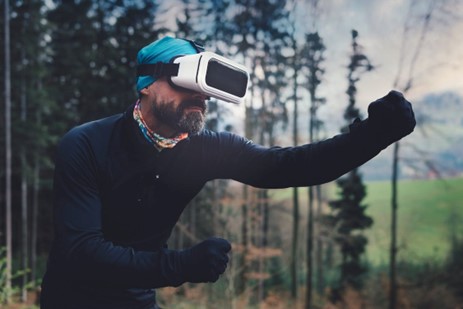Get insight into “HTC Looks to Compete with Meta’s Quest” HTC is looking to step up its involvement in the VR market with the introduction of a new device at 2023’s Consumer Electronics Show. As a challenger to Meta’s Quest, HTC’s new system is expected to launch at a lower cost than its modern competitors. With modern VR systems still costing more than casual consumers can afford, there are hopes that this new system could help bring VR and AR to much wider audiences.
The New Headset
The currently unnamed new headset from HTC is built off the company’s former experience with its Vive line, first launched in 2015. The latest of these, the Vive Focus 3, was announced in May of 2021, vastly improving the hardware of the systems launched just a few years before. With better resolution, frame rate, and field of view, there are expectations that the new system should achieve similar accomplishments.
Additional announcements and interviews have revealed that the new headset is aiming to be smaller and more mobile than older solutions. This is an important factor in driving VR and AR use, as bulkiness and the strain it causes have been ongoing causes for concern. Boasting ergonomics as the main design principle, and a lower price point than Meta’s Quest, HTC’s upcoming release could be one of the best in the business, and at an all-important respectable price point.
An Approach to Ubiquity
VR and AR systems have long been promised in science fiction and by real-life futurists, yet their adaption has constantly been a point of debate. Their potential today is astounding, but it’s also a case where limitations on hardware and software have prevented the technology from living up to predictions. In the future, improvements and expansion along both lines will have to play parts, from what we see coming now to what developers of the future can envision.
Steps in Hardware
If the new HTC system can accomplish its stated goals in a smaller and more powerful design, then it’s well on the way to acting as another step on the hardware side of the equation. Though this isn’t exactly the level of mobility many of us demand, it’s still a considerable improvement over bulkier first gen systems which relied on heavier cables and no wireless support.
To achieve ubiquity, VR and AR systems are going to have to be able to further minimize form-factor and increase portability. While we can’t expect headset technology to ever become as mobile as smartphones, for true acceptance, newer systems are going to have the same ease of transport as is seen in laptops.
Overcoming this problem would require considerable improvements in processing power and power supply technology. Currently, the processing demands of VR and AR mean the most intensive uses tie them to powerful desktop computers. Likewise, the power draw of this tech requires a hardline to stay active. Both of these issues will decrease as processing and power tech improves, though to what level remains to be seen.
A Software Approach
In terms of software, ubiquity for the average user is going to be creating experiences with as broad of a reach as possible. In the current state, chat programs like VRChat and gaming experiences like Half-Life: Alyx have already shown a path for enthusiasts, but more casual users need broader systems to engage with.
In the future, we could see more promising involvement with expansion into more widespread entertainment activities, like online casino gaming. The biggest of these services already succeed with the application of the latest casino bonuses like free spins, and deposit matches. Pushing the success of these systems even further is the greater access allowed through mobile browser access. In this way, virtualizing existing casinos to play with VR or AR functionality could be another way to integrate constantly expanding markets. Similar involvement could also be approached in video streaming and concert experiences, with the right approach.

It’s been less than a decade since the Oculus Rift launched, in March of 2016. As the headset that set off the new age of VR, it’s been astounding to watch how much growth has manifested in such short a time. From predictions of early failure, the VR and AR markets continue to grow, as HTC’s system demonstrates. While there’s little doubt that the new system from HTC will introduce new features, it’s still important to remember it as another step along the way to a more virtual world. It might be cutting-edge at launch, but eventually, we could be looking back at these systems as we do black and white TVs today.
Continue to check our website for more articles of this kind. And, please use our comment section as well, we would love to hear from you.







